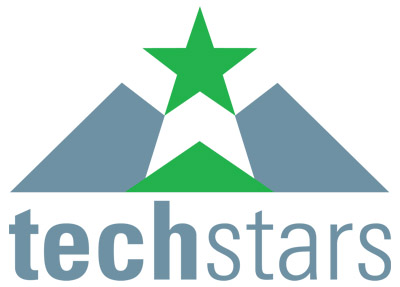
This past weekend I served as a mentor and judge at the “COVID-19 USA Startup Weekend”, a three-day startup hackathon sponsored by the global startup accelerator Techstars. This was their first-ever global, virtual event and it featured startup teams pulled from over 50 countries who were competing for the honor of being judged among the “Top 10” best pitches.
For international startups and scaleups planning U.S. market entry, a well-crafted Pitch Deck is essential for making positive first impressions that open doors. And global accelerators like Techstars have amassed an amazing reservoir of knowledge on how to make your pitch deck great.
Based on my learnings from this past weekend, here is a summary of the five characteristics of a highly effective pitch deck that will capture attention, shape understanding, and inspire interest in your company among U.S. audiences.
#1 CLEAR – your deck should be clear and to the point
Your pitch deck should communicate ideas clearly, efficiently and without confusing or boring the audience. Here are several tried and true techniques to accomplish the goal:
- Tell a story – your talking points should be well articulated and sequenced to form a coherent narrative or story that will engage and entertain listeners
- Keep it simple – when crafting your pitch deck try to model the old adage – “less is more”. Do this by using single words or short phrases to telegraph key ideas
- Visualize it – use the power of professional graphic design to frame the narrative, illustrate key points, and reinforce your brand design values
#2 CREDIBILE – your deck should be professional-grade
Your pitch deck should signal thinking and execution of the highest professional quality – if not, you risk losing credibility and turning off the audience. To do this, make sure to nail down:
- Value proposition – polish your Value Proposition to perfection. Clearly explain the “customer problem” and excite your audience with a compelling vision of “your solution”
- Product proposition – make sure your MVP – Minimum Viable Product – is brilliantly designed and well-illustrated (think “how it works” graphics) so your solution is the hero
- Quality content – a poorly written pitch deck is the kiss of death. Take time to craft a great story told with eloquence and elegance. Your audience will repay you with their full attention.
#3 ORIGINAL – your ideas should stand out from the crowd
At the heart of your pitch deck is the product & value proposition – slides that show how your product works and why it is different/better than the competition. Nail this, and you will outshine competitors and capture the attention of key audiences. Some examples of big ideas that stand out:
- The “first mover” – think iPhone. Be first to market with a new product or service that brilliantly solves customer needs and is delivered in an attractive and reliable bundle
- The disrupter – think Netflix circa 2000. Here the value proposition was so attractive (capped monthly fee for unlimited DVDs home delivered) it killed the Blockbuster model
- The innovator – think GPS…an older technology used in a new, innovative ways. GPS, first developed for the military, is now integrated into consumer products worldwide.
- The branded commodity – think Evian. Many global brands have been used to differentiate commodities. Water, prunes, petrol, toilets – all transformed by strong value-based branding
#4 FEASIBLE – your ideas should be realistic & achievable
Let’s talk about execution. In order to attract investors, partners and end-users, you must deliver your product on-time and on-budget to the marketplace. To do this, be sure to address these operational hurdles in your planning…and in your pitch:
- Financial – do you have a realistic business model and seed money to get things started?
- Legal – do any legal or regulatory challenges stand in your way?
- Technical – do you have access to technical expertise to launch and sustain the product?
- Managerial – do you have access to managerial talent needed to move things along?
- Promotional – do you have a skilled sales & marketing team to generate demand?
- Plant & equipment – will you have sufficient infrastructure to meet/exceed demand?
#5 COMPELLING – your ideas should be irresistible
When it comes to your pitch deck this is the moment of truth. Does the combined effect of the formal pitch presentation, and your verbal delivery of it, leave your audience wanting more? Signs of success include – you put a twinkle in their eye, they want to talk, they want to try the product.
But beware – success depends on “getting it right” on the factors described above: Clarity, Credibility, Originality, Feasibility. In addition, you should nail down the following:
- Business model – bring your vision to life by presenting a compelling go-to-market strategy and support it with fact-based models that suggest “money will be made”
- Team cohesion – reassure investors and partners with detail on the composition of your team, alignment of members, morale, and proof of strong leadership & vision at the top
- Research support – support every aspect of your pitch – and build confidence in your conclusions – with fresh data on market size, shares, needs, gaps, and concept testing.
- Presentation brilliance – end of day, you often only get 5 minutes (or less!) to deliver your pitch in person to key audiences. Practice, practice, practice and make yourself proud!
We hope these pointers on how to create a strong pitch deck for companies launching in U.S. markets are useful. If you want some real-time inspiration, we are always available to chat live via phone or Zoom!
_________________________
Dave Nemiah is Managing Partner at BrandReady USA, a Connecticut-based research & strategy consulting firm that specializes in helping young, ambitious companies tackling U.S. market entry. In recently years, he has focused on helping Nordic companies fine-tune their brand communications as a strategic lever for business development.

